Join More Than 50,000+ Subscribers and get latest camera news and rumors
NEW CAMERA VIDEOS ON YOUTUBE
|
By admin, on December 26th, 2024
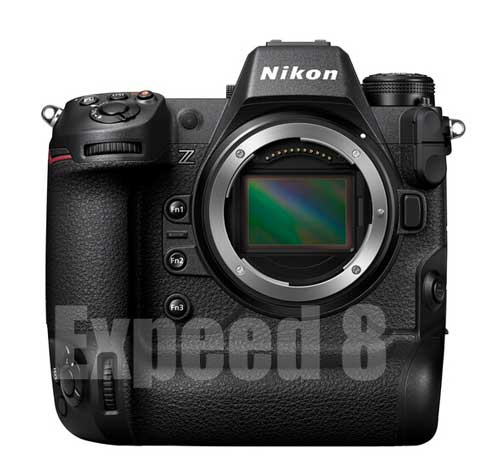
According to the latest famous source from the website nikoneye, the upcoming Nikon Z92 camera is expected to carry a 61-megapixel stacked CMOS sensor from Sony, which is currently being used inside the Sony A7R5 camera. This information isn’t correct, as per the information we have the Nikon Z9 II uses an Expeed 8 image processor and the same 45Mp Stacked CMOS sensor, expected announcement Q4 of 2025.
But just before that, we published an article about upcoming Nikon cameras of 2025, and in that article, we very clearly mentioned that
- the Nikon Z9 II camera will have an improved Expeed 8 image processor, but the sensor will remain the same 45-megapixel stacked CMOS sensor which was first announced with the Z9 in the year 2021.
- Not only that, the same source mentioned that the Nikon Z5 II camera is coming very soon, with the most probable announcement due in the month of January 2025, and shipping will start sometime in the months of February or March.
Support us – Use or affiliate link Amazon.com | B&H Store for the next purchase u make – it helps us 🙂
Follow us on our social pages FACEBOOK | TWITTER | INSTAGRAM to get live Camera News +
website mentioned – Nikoneye
By admin, on December 26th, 2024
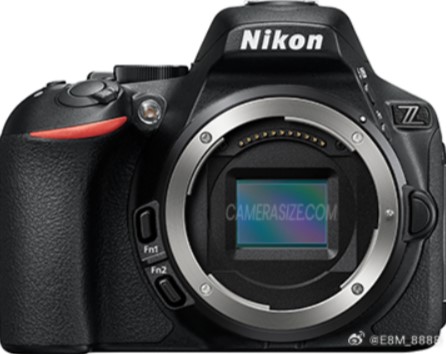
So, let’s talk about the Nikon ZDc rumour, which is now floating across various platforms, specifically from the E88_88 source. This type of rumour indicates that Nikon may introduce a hybrid DSLR camera specifically targeting beginners, it will be an attempt to cover the 200D Mark II / 200D market share. The camera is still hugely popular in the Asian market, and many content creators are still using Canon’s 200D series cameras. It suggests they might announce a hybrid DSLR camera with a ZDc name.
TNC take: This rumour is not correct in any way. DSLR makers have tried their best since 2018 to establish themselves in the mirrorless market. Nikon is doing very well with its mirrorless offerings, starting with the baseline Z30 and ending with the Z9 camera. So, I don’t think this particular rumour sounds logical to me.
Nikon Upcoming Camera 2025
Follow us on our social pages FACEBOOK | TWITTER | INSTAGRAM to get live news + Nikon Rumors 24X7
source E88_8888
By admin, on December 25th, 2024
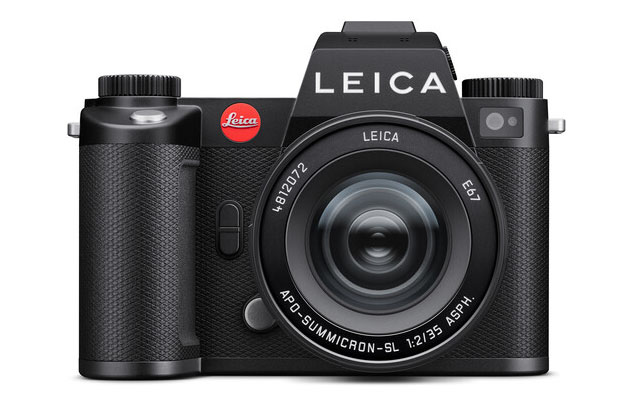
Leica SL3-S is Coming on January 16th. According to the latest rumors, the new addition to the sensitivity range will happen in January 2025. As we all know, Leica runs two different series of flagship cameras: the high-resolution series and the Sensitivity.

Here’s an example: we have the Leica SL2 (discontinued) and Leica SL2-S (s for sensitivity). Similarly, we have had the Leica SL3 for a while with a massive 61 MP sensor, and now we are waiting for the Leica SL3-S camera.
Take a look at the Leica SL3 Specification
- 60MP Full-Frame BSI CMOS Sensor
- Maestro IV Image Processor, 8GB Buffer
- Hybrid AF System with PDAF & Contrast AF
- 5.76m-Dot 0.78x-Mag. EyeRes OLED EVF
- 3.2″ 2.3m-Dot Tilting Touchscreen LCD
- 8K, C8K, 4K, C4K & FHD 10-Bit Recording
- ProRes 1080p & Apple MFi Support
- ISO 50-100000, Up to 15 fps Shooting
- 5-Axis Sensor-Shift Image Stabilization
- CFexpress Type B & SD UHS-II Card Slots
The Leica SL3-S camera is rumored to feature a 24 MP FF BSI CMOS sensor, as soon as we get any new update we will post it here.
Follow us on our social pages FACEBOOK | TWITTER | INSTAGRAM, get live news + Leica rumors 24X7
source LRumors.com
By admin, on December 23rd, 2024
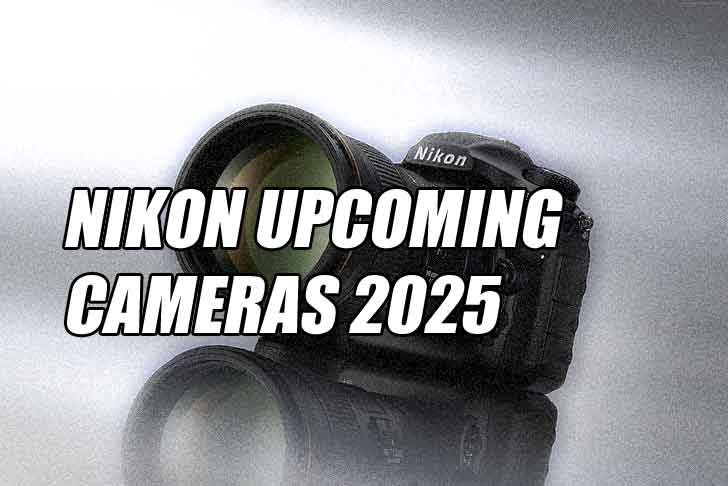
List of upcoming Nikon cameras for 2025. Now, let’s discuss what’s next from Nikon, as per the latest rumors. Due to the recent developments in AI Processing Units and software-based technology, Upcoming Nikon cameras now pushing the performance limits to a new standard. Not only about the upcoming Mirrorless camera, We have strong hints that Nikon is working on a RED-style Cinema camera too, other than that Nikon Z9 Mk II, Nikon Z7 III, Nikon Z30 II, and more…, coming in the year if 2025. So, let’s start with the Nikon Z30 II
Canon Upcoming Cameras 2025 | Sony Upcoming Cameras 2025
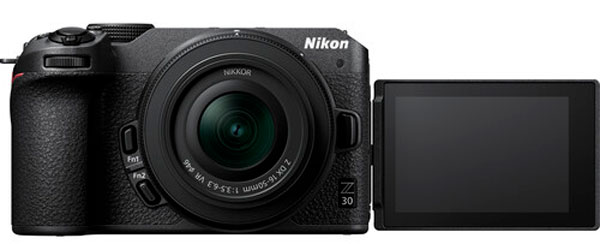
1. Nikon Z30 II
Nikon Z30 Mark II or Nikon Z30 II is expected to feature the same Expeed 7 image processor and the same 20.9 MP sensor of the Nikon Z50 II camera, with the following set of expected core specs.
So there you see, possibilities exist, and now let’s discuss these cameras’ expected core specifications.
Possible Specs of the Nikon Z30 Mark II
- 20.9MP DX-Format CMOS Sensor
- EXPEED 7 Image Processor
- UHD 4K 60p Video (Crop Mode) with 125-Minute Limit
- Full HD 120fps Slow-Motion Recording
- 10-Bit Internal Recording via HDMI
- Hybrid AF with Enhanced Eye and Face Detection
- Subject Detection for 9 Types (animals, vehicles, etc.)
- 3″ Free angle Touchscreen LCD (180° for vlogging)
- Built-in stereo Mic with Wind Noise Reduction
- 3.5mm External Mic Input
- New Tally Lamp for Recording Indicator
- Wi-Fi and Bluetooth for Seamless Connectivity
- ISO 100-51200
- Up to 11 fps Continuous Shooting
- Vlog-Friendly Design with Selfie Controls
Nikon Z30 Mark II Arrival Date [Expected Timeline]
Based on Nikon’s product update trends and the typical lifecycle for entry-level models, the Nikon Z30 Mark II announcement is likely to happen around on Q4 of 2025 or Q1 of 2026.
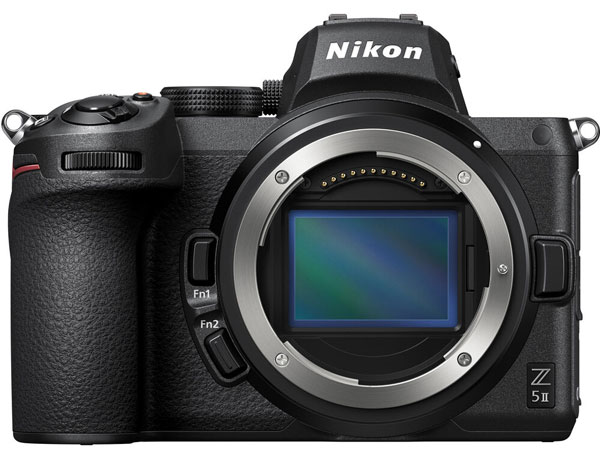
Update: Nikon Z5 II Announced
2. Nikon Z5 Mark II
Finally, as we have predicted, the Nikon Z5 II camera has been officially announced. Check out the latest post related to the Nikon Z5 II camera
Nikon Z5 II – All the latest updates
That is interesting and if it arrives, specifically with IBIS then for sure Canon R8 will get a very tough competition from Z5 II.

3. Nikon Z9 II
Nikon Z9 II will get the Expeed 8 image processor, image processor will remain the same. That means we will get a massive update in the processing power of the existing Z9 camera, which will directly affect the autofocusing algorithms, specifically 3D object tracking, continuous shooting speed, video recording resolution, and frame rate. So for sure, we will have a massive update in the camera’s core specifications. The camera is expected to arrive in the fourth quarter of 2025.
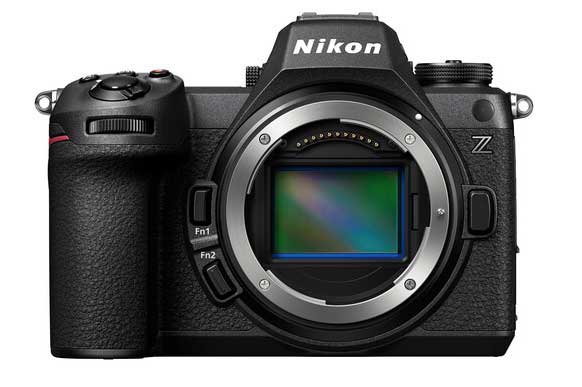
4. Nikon Z7 III
the Nikon Z7 Mark III will mark its presence sometime in August to November 2025. As per the latest rumors, Nikon will bring a higher resolution sensor the the Z7 III series, probably a 61 MP sensor from Sony or a 67MP sensor from Towerjazz, Nikon has been working with 67Mp sensor Prototypes for more than 2 years. Some rumor mills believe the upcoming Nikon Z7 III will get the same 45.7 Mp stacked CMOS sensor, but that is not true. The priority of Nikon is to keep the Z7 III in competition or better than the Sony A7R series, specifically in terms of image quality and dynamic range.
Nikon Z7 III Specification
- 61 + MP FX-Format BSI CMOS Sensor
- 8K30p and 4K60p Video, 10-bit Internal, ProRes RAW
- Up to 20 fps Max Shooting
- 493-Point AF
- AI-Based Subject Detection
- 3.2″ 4-Axis Tilting Touchscreen LCD
- Dual UHS-II SD Slots
- 5 GHz Wi-Fi and Bluetooth
Nikon Z7 II is of the most outdated camera of Nikon Z mount along with the Nikon Z5, so Nikon Z7 III update will sure arrive in 2025 without a doubt, if we will get any updated related to the same will update you asap.

5. Nikon Cinema Camera
RED’s R&D teams worked for many years to achieve their current level of perfection. Now, with Nikon’s acquisition, it’s easier for Nikon to transfer these technologies and allow their Z-Mount R&D division to benefit from them. At the same time, Nikon will also share their advanced autofocus algorithms with RED, aiding in the development of active Z-Mount-based cinema cameras in the near future.
In past, RED partnered with TowerJazz for their cameras’ 20-megapixel global shutter Super 35mm sensors, offering advanced video capabilities. This partnership helped RED stay ahead of other consumer and mid-level cameras.
Nikon and TowerJazz Collaboration isn’t new, Nikon and TowerJazz have a long-standing relationship, with TowerJazz relying on Nikon for equipment and Nikon using TowerJazz sensors in their DSLRs and mirrorless cameras. This collaboration is evident from the companies’ shared presentation materials.
Potential Release of KOMODO or Raptor with Zmount:
A RED camera with Nikon’s Z-mount. We can expect upcoming RED Komodo-X variants, like Komodo Z to feature ACTIVE Z-mount support. Since the face detection system is already enabled with the Canon RF mount, if Nikon introduces a Z-mount, we can be sure that the face detection autofocus system will be enabled either via an app or directly in the camera.
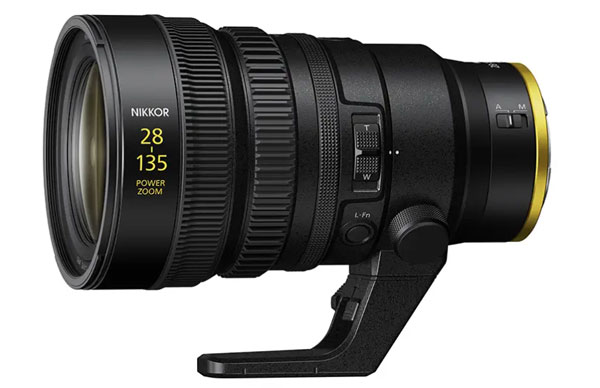
What to Expect – So in the future, we will see 12-bit internal video recording capabilities and global shutter sensors coming to Nikon Z-mount mirrorless cameras. At the same time, upcoming RED cameras will feature an active Z-mount with full-time autofocus support.
Arrival Date of Nikon Cinema Camera – We would love to have a development announcement from Nikon on or before Q4 of 2024. although they have already announced the development of their first cinema lens 28-135mm for Z mount.

6. Nikon Z90
According to the latest rumors, the 33 MP sensor prototype is expected to be approved for production. But at the same time, Nikon is now very concerned about market demand and is not just throwing up every mirrorless line in front of users. If they see very clearly that there is market demand, then they will surely announce the Nikon Z90 camera.
Nikon Z90 Latest Rumored Specification
- 33.4 Mp DX-Format CMOS Sensor
- EXPEED 7 Image Processor
- UHD 4K60p/Full HD 180fps Video Recording
- 5-Axis In-Body Vibration Reduction
- Focus-Point Stabilization
- AI AF, Improved 3D Autofocus, 9 Subject Detection
- Pre-Release Capture, 15 Mechanical Shooting
- Dual UHS-II SD Slots
- 5 GHz Wi-Fi and Bluetooth
Nikon has lowered the price of full-frame Z cameras, starting with the Z5 and Z6 II, as well as the ZF. All these full-frame cameras are in a reasonable price range. The main intention of the brand right now is to upscale the user experience to a frame sensor as much as possible. So, they can have as many options as possible in terms of Z-mount bodies and lenses.
So, we do not doubt the prototypes being tested in Nikon’s lab, and the Nikon Z90 will surely be announced in the near future. However, only time will tell when the marketing team gives a green flag to these prototypes.

7. Nikon Z80
There is very little chattering about the Nikon Z80 camera. Of course, if it arrives, it will be somewhere in between the Z90 and the Z50 Mark II camera. If you have to make an educated guess for a core specification of the Nikon Z80, then it will have a 24 MP DX partially stacked BSI CMOS sensor, paired with active pixel image stabilization, and 4K 60 FPS recording without any crop.
But again, the information related to a concept Z80 camera is very less. As soon as we get any information related to that, we will be updating you soon.

8. Nikon Z4
Nikon Z4 camera rumor: Back in 2022, we spotted a Nikon compact full-frame release camera body with very minimal controls. No EVF was included in the back to reduce the production line cost, and at the very same time, a tiny display was visible on top of the body. So, from this patent, it was very clear that Nikon is very mindful about developing a super budget full-frame body that will allow users to get a full-frame camera at a super affordable price range.

We received this theory from a source we trust a lot, but at the very same time, we decided not to publish it when we received it at that time, since at that time it didn’t look logical to me, but finally I am publishing it here
According to the source, Nikon will surely announce this Z5 II body next year (which means 2025). But at the very same time, they are also thinking parallelly to put the core specifications of the existing Z5 Mirrorless camera, paired with the Expeed 7 image processor, in a super budget body. By removing the EVF, the production line cost will go down, and with the video-core specifications and autofocus performance of the camera being improved, Nikon will position it as an entry-level Fullframe camera.
Also, see – Upcoming Canon Cameras 2025
This post was updated on April 21, 2025, by thenewcamera.com team Follow us on our social pages FACEBOOK | TWITTER | INSTAGRAM to get live news + Nikon Rumors 24X7
By admin, on December 22nd, 2024
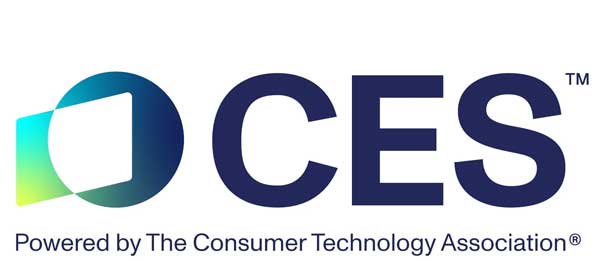
The CES 2025 event is scheduled to happen from January 7 to January 10 in Las Vegas. Different types of tech brands come from across the globe to showcase their innovative products at this particular event.
Now, from Nikon this year, Nikon will showcase an Innovative in-vehicle camera system co-created by Nikon and Mitsubishi Fuso to be exhibited at CES 2025 and we are expecting they will also showcase their recently announced Nikon Z63 and Z50 2 cameras, and we may witness some of the cinema camera prototypes that Nikon is working on.
Like every year, Canon will be showcasing its compact prototypes at the event.
During the CES 2025 event, Sony has an extensive presence and has booked multiple halls. At the same time, we are not sure, since Alpha Universe and other websites haven’t listed any of their events in the January month of their scheduled calendar.
Apart from these three camera makers, we also have Fujifilm Corporation attending the event. We are expecting the presence of the Fujifilm medium-format cinema camera prototype that we saw a few weeks ago. Upcoming Fuji Cinema Camera Explained in 15 Points | Fuji Cinema Camera A Closer Look
Panasonic has also booked multiple halls since they have a huge presence in the consumer electronics market. At this same time, we are not able to find any registered Booth name with Lumix, which is the brand name used by Panasonic for their mirrorless cameras. It will be interesting to see whether Panasonic Corporation will allow the imaging division, Lumix, to showcase their products in their booked halls or not, so we have to wait for that.
We will share more information if we get any updates related to other camera makers and upcoming products.
CES 2025 – Nikon Booth Details
LVCC, Central Hall – 19504
Nikon in a recent press release mentioned
“Innovative in-vehicle camera system co-created by Nikon and Mitsubishi Fuso to be exhibited at CES 2025”
Camera with an optical lens system with telephoto and wide-angle functions to be exhibited at CES 2025
Nikon Corporation (Nikon) will exhibit an innovative in-vehicle camera system co-created with Mitsubishi Fuso Truck and Bus Corporation (MFTBC) at CES 2025. The camera features an optical lens system with both telephoto and wide-angle lens functions, enabling users to see far away and also check their periphery at the same time.
We will have our camera gear for the rest of the booths. Although I was expecting to see a cinema camera working prototype in the show, let’s hope for the best.
Canon Booth Details
Booth – Venetian Expo, Hall G – 61101
Back in 2024, Canon displayed several prototypes of their working compact models [Canon’s previous year cameras displayed at the CES show]. Now we are waiting for 2025, and I do hope and expect we will see attractive prototypes from Canon at this CES 2025
SONY Booth Details

More than two halls of space are booked for Sony and their subsidiary divisions, but at the same time, we don’t have information on whether Sony’s imaging division is also attending CES 2025 or not.
Sony official website ALPHA universe haven’t listed any Sony ALPHA imagine event in the month of January 2025
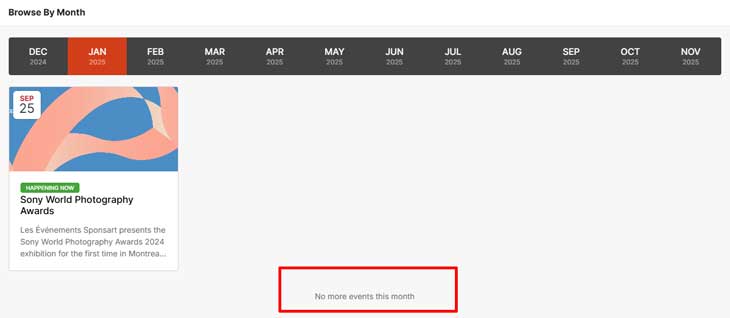
FujiFilm North America Corporation
Booths – LVCC, North Hall Mtg Rms – N104
Panasonic Booth Details
Booth –
LVCC, Central Hall – 16605
LVCC, North Hall Mtg Rms – N245
LVCC, North Hall Mtg Rms – N246
LVCC, North Hall Mtg Rms – N247
Venetian, Lvl 4 – Zeno 4804
Stay tuned, Stay updated
Get LIVE RUMORS –> FACEBOOK | TWITTER | INSTAGRAM to get live Camera News
By admin, on December 19th, 2024
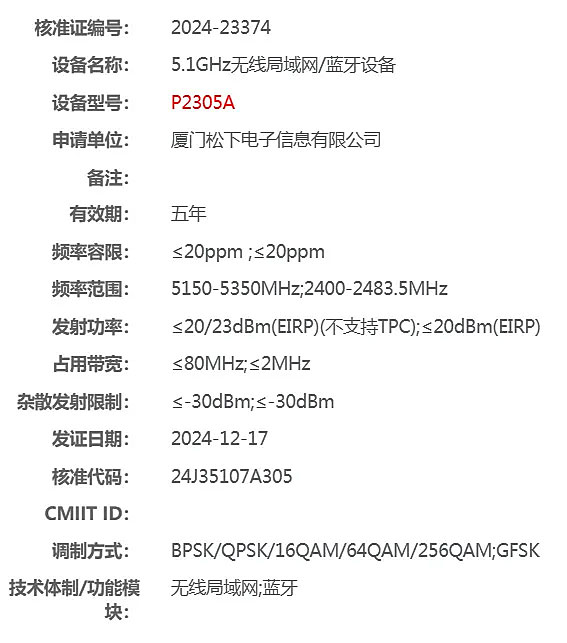
Panasonic registered a new dual-band WIFI machine P2305A. So far, there are three new dual-band wireless machines P2305A, P2307A, and P2303A, Generally a camera maker takes 3 to 4 months to announce a camera once a product gets registered in the wireless certification agency, 2025 will surely bring a lot of new gear to us. Feeling so excited …
Panasonic Latest Announcement – Panasonic ZS 99 – Panasonic G97 Press Release | Major Specification | G97 vs G95 –
Panasonic S5D Press Release | Major Specification | S5D vs Panasonic S5
Follow us on our social pages FACEBOOK | TWITTER | INSTAGRAM, to get LIVE News and Panasonic Rumor
source E888
By admin, on December 17th, 2024
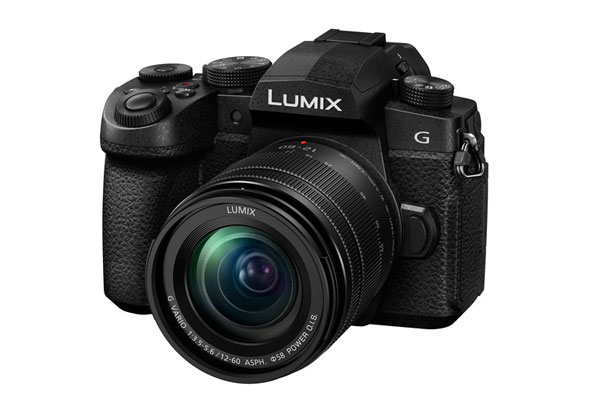
Panasonic silently updated its camera in the past due to the display screen supply line production issue (see here). Again, they faced the same problem with the G90 camera, so this time they had to make a bit more significant update and re-launch it as a brand-new camera.
So this time, they have not only updated the screen but also upscaled all possible core specifications. Possible for that particular price range with the available resources.
The first major update you will notice this time is the display screen, which is now 1.84 Million dots, The resolution of the screen is somewhere around 1.4 million dots. The electronic viewfinder of the camera remains the same with 2.36 million dot resolution, which is quite reasonable within the price range.
The sensor and image processor of the camera remain the same, but we do have some minor updates all over the body. So let’s discuss that.
We have Single card slots, which are compatible with UHS-II cards, a headphone port, a micro-HDMI port, and a USB-C port, and with that port, you can now also charge your battery.
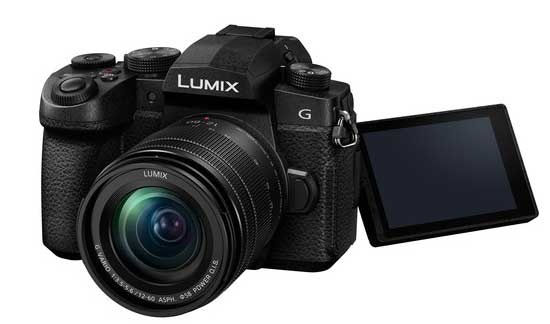
The menu system has been slightly upscaled to make it better. Now it looks very similar to the new S5 II and S5 IIX cameras.
Unfortunately, we are getting the same 20-megapixel sensor of the G90 or G95 camera with the DFD autofocusing system, which clearly means the autofocus will be slow and will include a lot of focus hunting in low-light situations. Thanks to the new image sensors of Panasonic introduced in the Panasonic GH7 camera, which now has 25-megapixel resolution and hybrid autofocusing points. The same technology exists in the full-frame S5 II and S5 IIX cameras, which now use a hybrid phase-detection autofocus sensor of 24MP resolution.
So, that’s a very welcome upgrade Panasonic has done recently with their new range of cameras, but the older series with DFD autofocusing systems remains in its place.
Let’s talk about the video recording capability of the camera. With the recently announced Panasonic G97, you can record 4K videos up to 30 frames per second and Full HD videos up to 120 frames per second.
The best thing about the Panasonic G97 camera is the built-in 5-stop image stabilization system, which is very, very effective while shooting video on the go. It manages the camera shake that most professional cameras are not able to handle even with their 7-8 stops of IBIS.
But again, the issue with the 4K recording is a 1.25x crop, even at 4K 30 frames per second. So, if you are using a 16mm lens, the resulting output will be somewhere around 20mm. If you want to create vlogs with the camera, you have to buy a lens like a 9mm F1.7 aperture lens, which is also not too expensive and can be used for day-to-day vlogging purposes.
Other upgrades include Bluetooth, which has been upscaled to 5.0 from 4.2, and with the help of the upscaled Bluetooth chip, you can now synchronize your camera with the Lumix Sync app. With the help of the app, you can try new LUTs as well as transfer your images seamlessly on the go.
More or less, it was the need of the time to refresh the display screen of the camera due to production line issues coming out from the display makers. But Panasonic made a smart move to update the overall core specifications of the camera and made it slightly more usable for today’s generation at a budget price range.
Panasonic G97 Major Features
- 20.3MP Digital Live MOS Sensor
- Venus Engine Processor
- New USB-C Power and Data Connectivity
- Bluetooth 5.0 Low Energy (LE)
- 2.4 GHz Wi-Fi Connectivity
- UHD 4K Video Recording at 30p (8-bit 4:2:0)
- External UHD 4K Recording via micro-HDMI (4:2:2 8-bit)
- Pre-Installed V-Log L for Flat Gamma Recording
- Slow Motion Video Recording at 60 fps in Full HD
- 5-Axis Sensor-Shift Image Stabilization
- Dual I.S. 2 with Compatible Lenses (Up to 5 Stops)
- 3.0″ 1.84m-Dot OLED Rear Touchscreen (Free-Angle Tilt and Swivel)
- 0.74x 2.36m-Dot OLED Live Viewfinder (LVF)
- Advanced DFD (Depth-From-Defocus) Autofocus System
- 49-Area Autofocus with Face/Eye Detection
- ISO Sensitivity up to ISO 25600
- Continuous Shooting at 9 fps (AF-S) and 6 fps (AF-C)
- 4K PHOTO Modes: Burst, Pre-Burst, and Burst (S/S)
- Magnesium Alloy Body with Splash and Dust Resistance
Additional Features:
- Battery Life: Approx. 290 shots (Standard) or 1,050 shots (Power Save LVF Mode)
- Focus Peaking and Touch MF Assist (20x Magnification)
- Electronic Shutter: Up to 1/16,000 sec
- Mechanical Shutter: Up to 1/4000 sec
- Live View Composite Recording
- Photo Style Modes (e.g., Vivid, Monochrome, Cinelike D)
- Filter Modes (e.g., Retro, High Key, Cross Process)
Comparison Table: Panasonic G97 vs G95
| Features |
Panasonic G97 |
Panasonic G95 |
Differences Highlighted |
| Design |
|
|
|
| Dimensions (W x H x D) |
130.4 x 93.5 x 77.4 mm |
130.4 x 94.3 x 77.1 mm |
G97 is slightly shorter in height (-0.8 mm). |
| Weight (Body Only) |
478 g |
536 g |
G97 is 58 g lighter. |
| Material |
Magnesium Alloy |
Magnesium Alloy |
No difference. |
| Monitor |
3.0” OLED, 1.84M dots, Articulating |
3.0” OLED, 1.24M dots, Articulating |
G97 has a higher-resolution display. |
| EVF Resolution |
2.36M dots, OLED |
2.36M dots, OLED |
No difference. |
| Viewfinder Magnification |
0.74x |
0.74x |
No difference. |
| Ports |
Micro-HDMI, USB-C, Headphone, Mic |
Micro-HDMI, USB 2.0, Headphone, Mic |
G97 upgraded to USB-C. |
| Bluetooth |
5.0 |
4.2 |
G97 has Bluetooth 5.0 (faster sync). |
| Battery Life |
Approx. 290 shots |
Approx. 290 shots |
No difference. |
| Photography Features |
|
|
|
| Sensor |
20.3 MP (4/3” MOS) |
20.3 MP (4/3” MOS) |
Same sensor resolution. |
| ISO Range (Photo) |
200–25,600 (Ext: 100–25,600) |
200–25,600 (Ext: 100–25,600) |
No difference. |
| Image Stabilization |
5-axis Sensor-Shift IS |
5-axis Sensor-Shift IS |
No difference. |
| Continuous Shooting |
9 fps (30 RAW, 600 JPEG) |
9 fps (30 RAW, unlimited JPEGs) |
G95 has unlimited JPEG buffer. |
| Metering Range |
0–18 EV |
0–18 EV |
No difference. |
| White Balance |
Auto, Presets, Custom |
Auto, Presets, Custom |
No difference. |
| Aspect Ratios |
1:1, 3:2, 4:3, 16:9 |
1:1, 3:2, 4:3, 16:9 |
No difference. |
| Videography Features |
|
|
|
| Internal Recording |
4K @ 30/24 fps (UHD, 100 Mbps) |
4K @ 30/24 fps (UHD, 100 Mbps) |
No difference. |
| 1080p Recording |
60/30 fps (20–28 Mbps) |
60/30 fps (20–28 Mbps) |
No difference. |
| Slow Motion |
1080p @ 120 fps |
1080p @ 120 fps |
No difference. |
| Crop Factor (4K) |
1.25x |
1.25x |
No difference. |
| External Recording |
DCI 4K via Micro-HDMI |
4K UHD via Micro-HDMI |
G97 offers DCI 4K output. |
| Recording Limit |
No limit |
No limit |
No difference. |
| Built-in Microphone |
Stereo |
Stereo |
No difference. |
| Audio Ports |
Mic + Headphone |
Mic + Headphone |
No difference. |
| Bluetooth and Wi-Fi |
BT 5.0, Wi-Fi 4 (802.11n) |
BT 4.2, Wi-Fi 4 (802.11n) |
G97 has Bluetooth 5.0. |
| Image Sync App |
Yes (Lumix Sync) |
Yes (Lumix Sync) |
No difference. |
Panasonic G97 Press Release
Panasonic Announces Two New Cameras:
Compact Micro Four Thirds LUMIX G97 and Pocket-Sized Travel Zoom LUMIX ZS99
Newark, N.J. (December 16, 2024) – Panasonic is pleased to introduce two new cameras to its LUMIX lineup: the Micro Four Thirds G97 and Travel Zoom ZS99.
The new LUMIX G97 and ZS99 offer a wide range of updated photo and video features to bring excellent image quality and usability to enthusiasts, photographers, and videographers alike.
LUMIX continues to develop its lineup to satisfy the needs of a wide range of creators and continually deliver value, innovation, and reliability to its customers.
LUMIX ZS99: New Pocket-sized Travel 30x Zoom Camera
Compact and feature-packed, the LUMIX ZS99 travel zoom camera is perfect for capturing life’s adventures.
Powerful 30x zoom in a pocket-sized body
Equipped with a 24-720mm LEICA DC lens*1, the LUMIX ZS99 offers 30x optical zoom and up to 60x with iZoom so that you can capture everything from sweeping landscapes to intricate details with stunning clarity.
With in-built 5-Axis HYBRID O.I.S.+, you can enjoy high-quality videos even at full zoom.
Unmissable Moments in 4K
Record high-quality 4K video at 30p or capture quick bursts of 4K PHOTO at 30fps to ensure you never miss a moment. Additionally, its ability to capture HD high-speed video at 120fps adds creative flexibility for slow-motion shots.
Packed with travel-ready features
A tiltable 1,840k-dot touchscreen makes creative angles easy, while USB Type-C charging ensures you’re always powered up on the go.
Easy image sharing
Connect instantly with built-in Bluetooth® v5.0*2 and Wi-Fi, plus a dedicated Send Image button for seamless transfers to your smartphone.
Price and availability
The new LUMIX ZS99 will be available in black (DC-ZS99E-K) and silver (DC-ZS99E-S) in mid-February 2025 for $499.99 at valued channel partners.
*1 35mm camera equivalent.
*2 The Bluetooth® word mark and logos are registered trademarks owned by Bluetooth SIG, Inc., and any use of such marks by Panasonic Corporation is under license. Other trademarks and trade names are those of their respective owners.
LUMIX G97: New Compact Hybrid Micro Four Thirds Camera
The new LUMIX G97 camera balances high performance and simplicity, giving creators the tools to elevate their photography and video skills.
Superb picture quality
The 20.3MP CMOS sensor, combined with the high-performance Image processor, delivers superb image quality with vibrant colors and sharp details.
Equipped with LUMIX Photo Style feature, users can fine-tune their images with a variety of color effect options, ensuring every shot matches your creative vision.
The Live View Composite feature is also included, providing the ability to combines multiple exposures in real time to create stunning light trails, star trails, or illuminated scenes without overexposing the background.
Smooth performance
The LUMIX G97’s 5-stop 5-axis Dual I.S.2*1 system ensures unrivalled stability, so your photos and videos remain sharp even in challenging conditions.
With 4K PHOTO capabilities, you can capture bursts of high-resolution photos at 30fps, ensuring you never miss a fleeting moment. The perfect shot from burst footage makes this feature ideal for fast-moving subjects or spontaneous scenes.
Versatile video features
Record in crisp 4K at 30p with no time limitations*2, experiment with slow-motion (max.4x) or quick-motion (max.8x) in FHD, and create cinematic content with 12-stops of V-Log L. Dedicated headphone and microphone jacks ensure total audio control while recording.
Intuitive operation and reliable design
With a 1,840k-dot free-angle LCD and 2,360k-dot OLED Live View Finder*3, the LUMIX G97 makes it easy to frame and focus your shots accurately, even in bright conditions.
The durable dust/splash-resistant*4 construction is ideal for everyday creators looking for a camera that can reliably handle a variety of situations.
Built-in Bluetooth® v5.0 and Wi-Fi make sharing and remote control effortless, while USB Type-C charging adds convenience.
Price and availability
The new LUMIX G97 will be available in late February 2025 for $849.99 for a 12-60mm lens kit (DC-G97MK) at valued channel partners.
|
KEEP THIS BLOG ALIVE - Support New Camera Buy Canon Lenses, Buy Music CD or Digital Camera at amazon it helps this site, and you do not pay anything extra, it is just a way to help support this site.

|


























